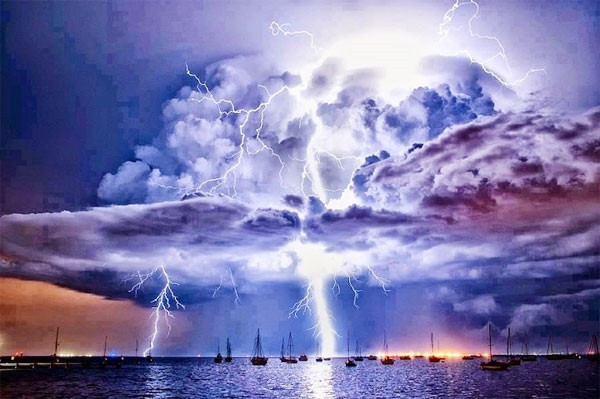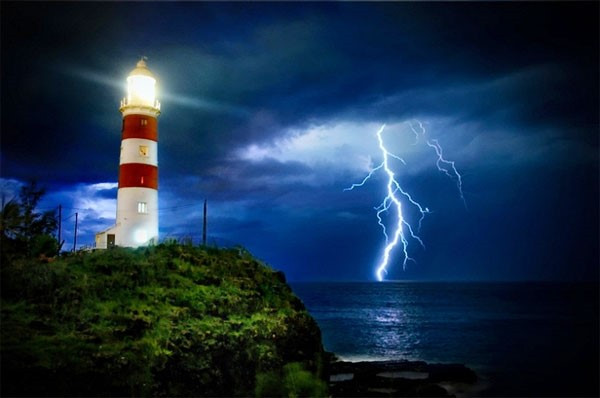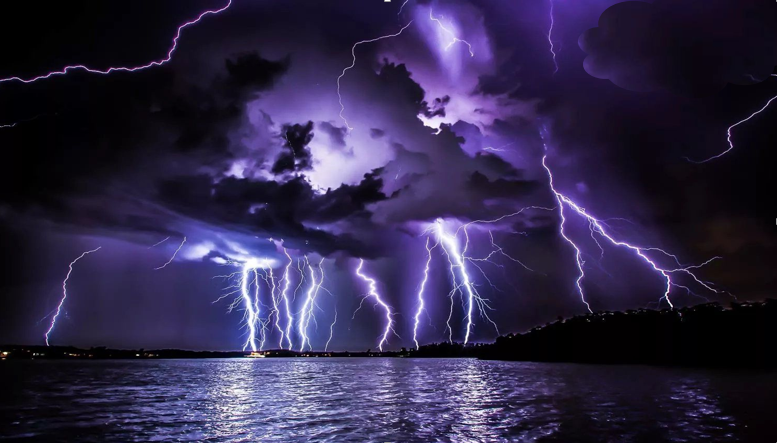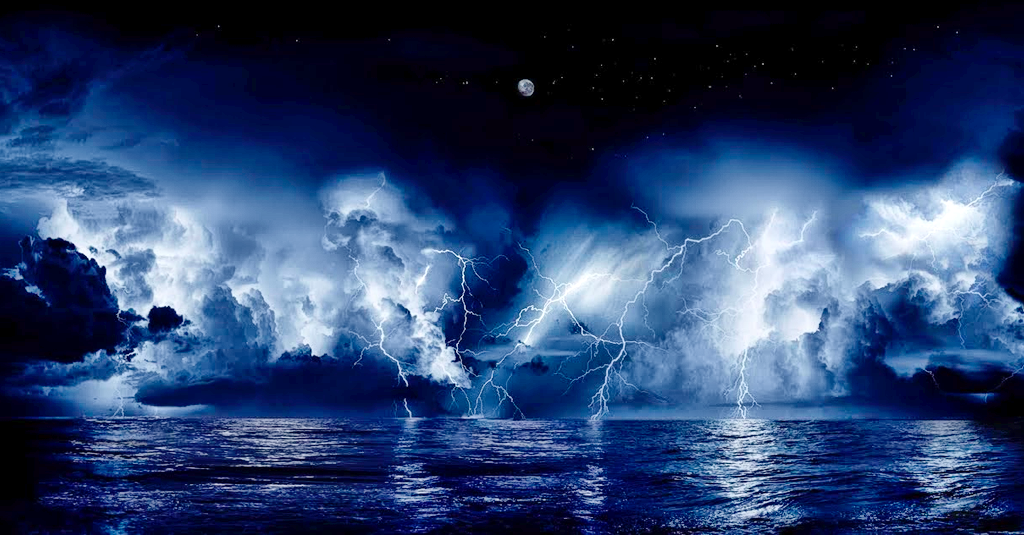The Guinness World Record holder for the most lightning strikes in one minute is the mouth of the Catatumbo River, which flows into Lake Maracaibo, in the state of Zulia, northwestern Venezuela.
For centuries, the area where the Catatumbo River flows into Lake Maracaibo, in the northwestern Venezuelan state of Zulia, has held the Guinness World Record for the most lightning strikes per minute. There are about 160 nights of lightning strikes each year and 10 hours a day.
Lightning strikes 280 times per hour, about 40 times per minute, equivalent to 1.2 million lightning strikes per year. This amazing natural phenomenon is called Catatumbo lightning.
“River of Fire in the Sky”, “River of Fire from Heaven” or “Relámpago del Catatumbo” or “Rib a-ba” are the nicknames that locals use to describe Lake Maracaibo.
Because it only strikes in one location, the lightning in Lake Maracaibo has been considered a natural lighthouse for the past 1,500 years.

The natives consider Catatumbo lightning as their pride and sacred amulet. Besides, they also take advantage of this natural light to determine direction when sailing at night.
Moreover, the dense lightning also contributes to the regeneration of the earth’s ozone layer, protecting the environment. Lightning discharge is also a natural source of nitrogen fertilizer that makes crops flourish.

Lake Maracaibo is most vulnerable to the elements in October, when a series of storms bring heavy rain and lightning. At times, the area experiences up to 28 lightning strikes in a minute—enough to power 100 million light bulbs.
For generations, villagers have been stunned by the fury of nature with its raging lightning storms. As a result, experts have been trying to find an answer to this special phenomenon for centuries. For decades, scientists believed that uranium mines in the lake area were the cause of lightning, causing this place to suffer such a high density of lightning strikes.
However, many now believe that the combination of the terrain and winds of Lake Maracaibo is the main cause. According to Dr. Daniel Cecil, of the Center for Global Weather and Hydrology (USA), terrain plays an important role in promoting hot or cold winds, thereby forming storms.
Air instability and moisture are key factors, and Catatumbo lightning is enhanced by the unique topography. Lake Maracaibo and the surrounding plains are blocked on three sides by large mountain ranges, including the Andes, Perijá, and Cordillera de Mérida, leaving a narrow corridor northward toward the Gulf of Venezuela, creating strong cold winds that regularly blow down onto the lake.
The Caribbean Sea flows in providing warm water while the hot tropical climate causes water to evaporate rapidly, creating hot, humid air. Strong winds lift the hot, humid air into cumulonimbus clouds. When water droplets in the hot, humid air collide with ice crystals from the cold air, it creates an electrical charge, resulting in lightning all year round.
During the day, in northwestern Venezuela, Lake Maracaibo flows past the city of Maracaibo into the Caribbean Sea. Steam from the lake’s surface warmed by the sun rises. At night, trade winds blowing in from the sea push this warm air into the cold air blowing from the mountains, creating “storm clouds” that emit electric sparks called lightning.
One surprising aspect of these consistent lightning strikes is that they are not accompanied by thunder. Some believe that Catatumbo lightning does not cause thunder and this is truly a mystery.
The reason behind the absence of sound is due to the fact that lightning storms occur 50-100 km away from witnesses.
Science says that you will hardly hear thunder if you are more than 25 km away from the lightning. So this is used to explain the above mystery.

This natural phenomenon is also related to an interesting story in history. One evening in 1595, warships commanded by English sailor Francis Drake were on their way to raid the city of Maracaibo (owned by Spain at that time).
As they passed through this area, streaks of light in the sky revealed them, and the attack was thus called off. This story is also recorded in the epic poem 16 La Dragontea.
In addition, Catatumbo lightning is also associated with Venezuela’s independence. In 1823, these lightning strikes helped the Venezuelan army detect Spanish warships and win against the enemy. Therefore, the image of lightning appears on both the flag and the national anthem of Zulia state.
In 2014, the Guinness Organization awarded a certificate to recognize Catatumbo lightning as a unique meteorological phenomenon.
Because of its unique potential, the Venezuelan government is seeking to have the Catatumbo lightning listed as a UNESCO World Heritage Site. This would make it the first natural phenomenon to be included on the list.

Coming to the lake area, you have the opportunity to witness extremely unique and spectacular lightning shows that are not available anywhere else, and can still be clearly seen from a distance of more than 40 km.
In addition, the tropical forest surrounding Lake Maracaibo is also home to jaguars, crocodiles, boas, butterflies and countless other animals and plants. It will not be a waste if you spend time exploring the wild natural world here.
Night was falling fast, which meant the show would soon begin. The sky was getting brighter and brighter, and the horizon seemed to be constantly shooting out lightning. What was even more special was that the lightning was sometimes white, red, and even purple.
It is unbelievable that the fishermen take advantage of these “natural lighthouses” to fish at night. They are really brave.





